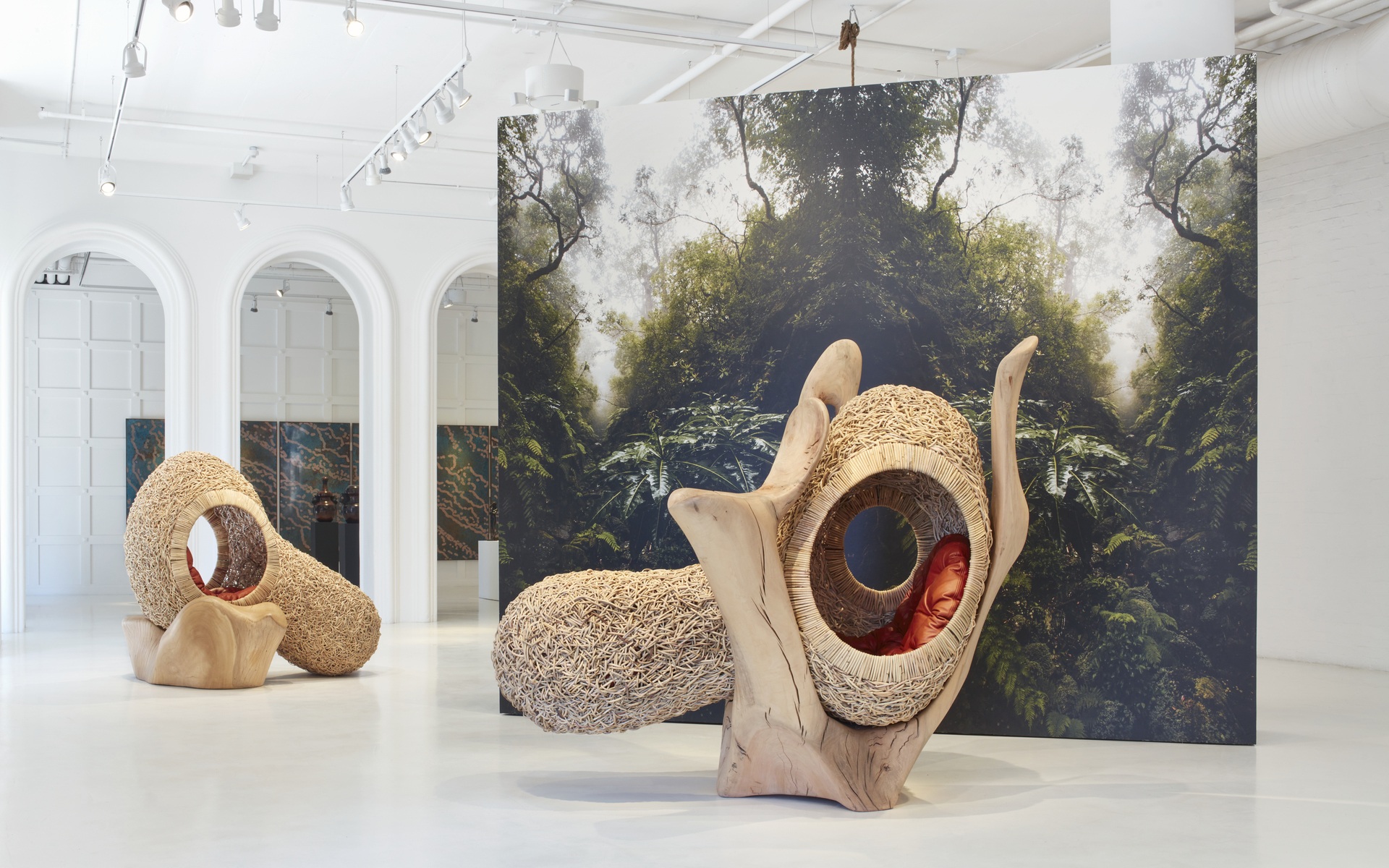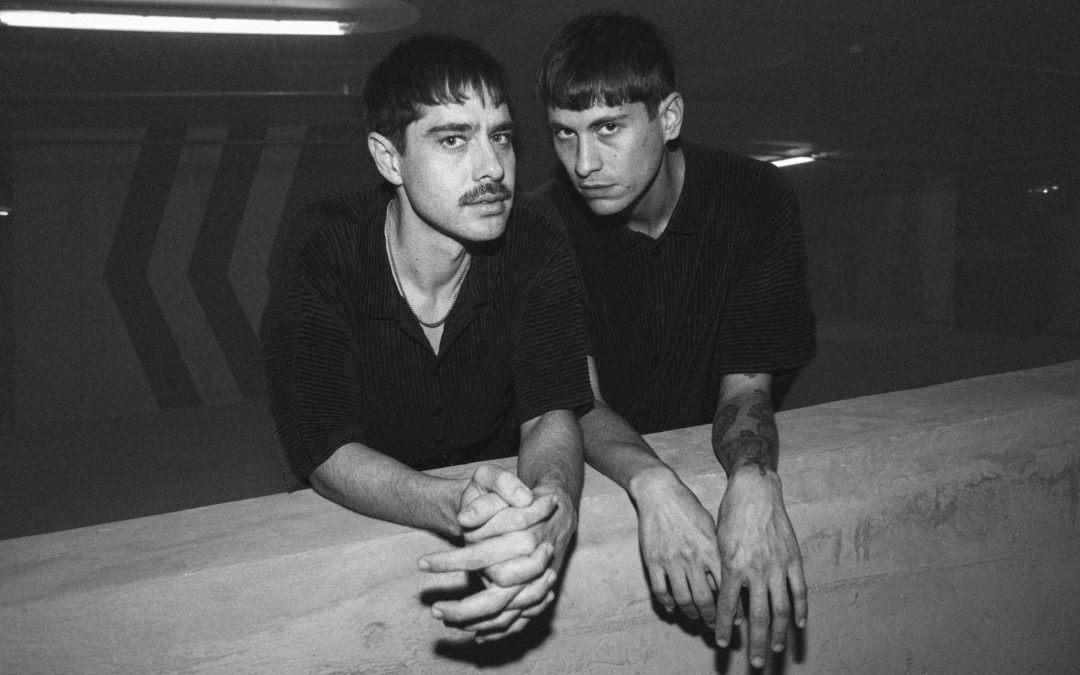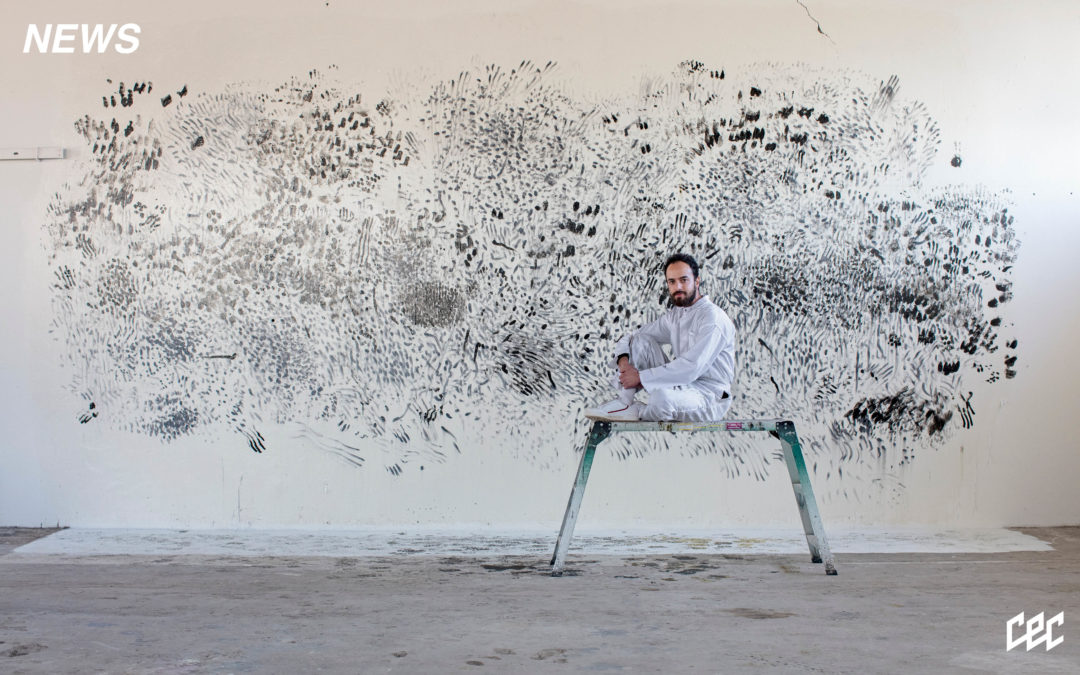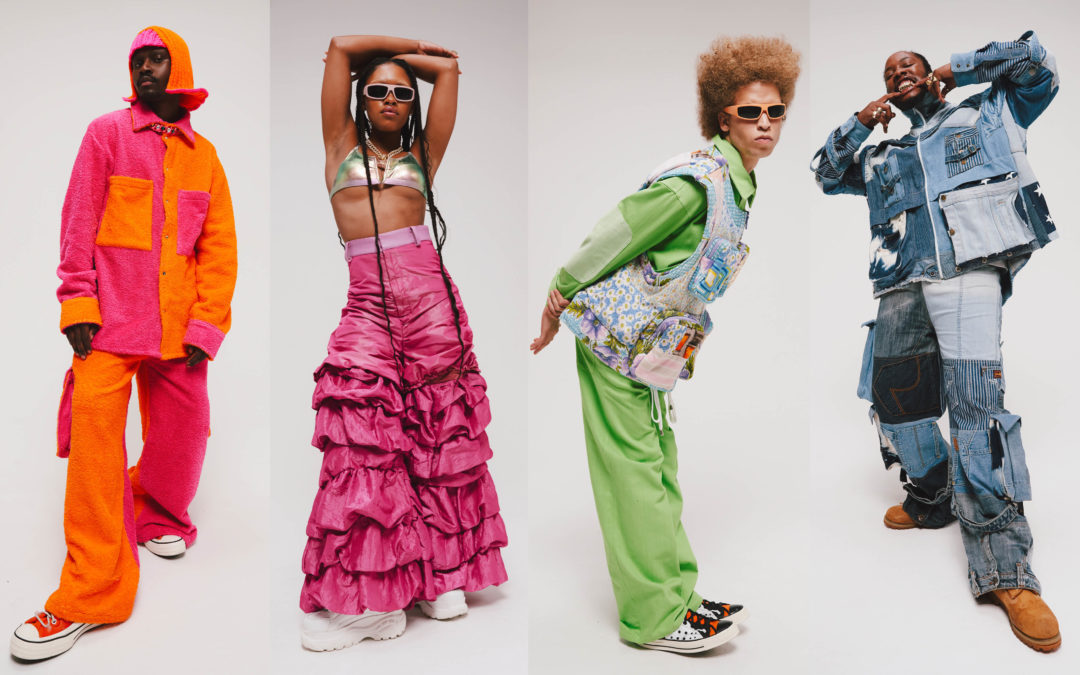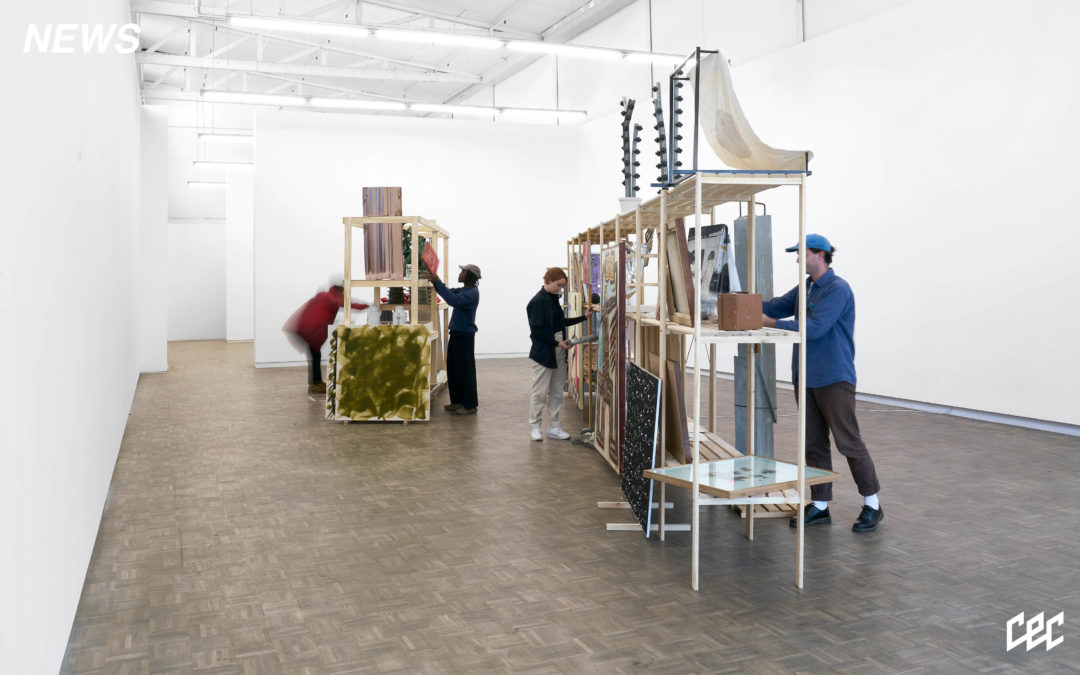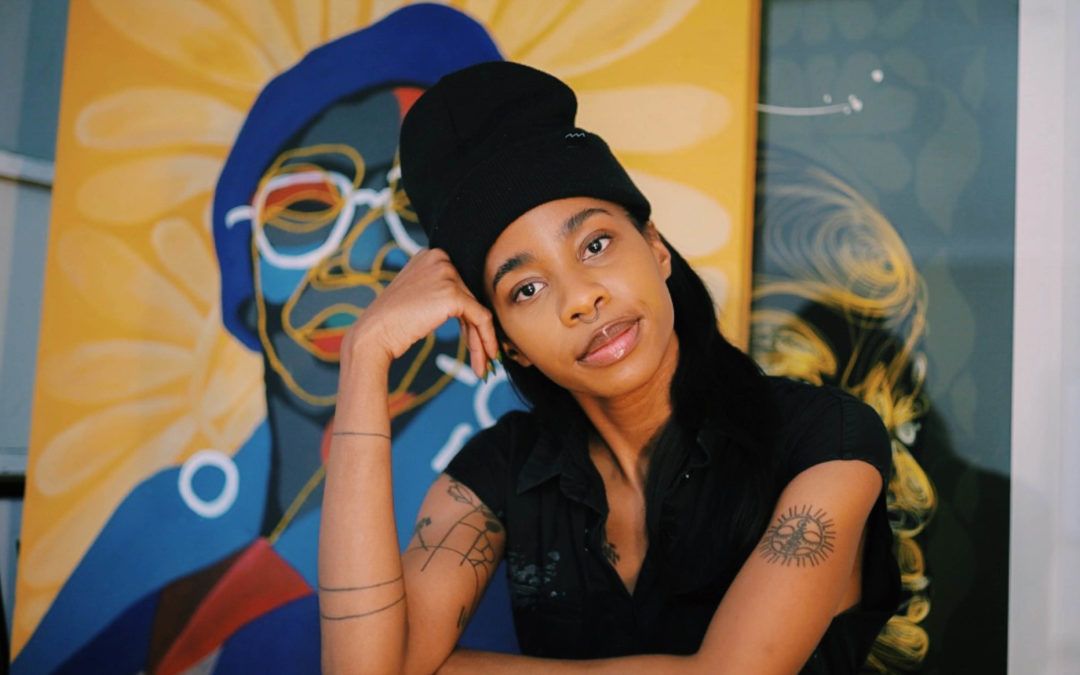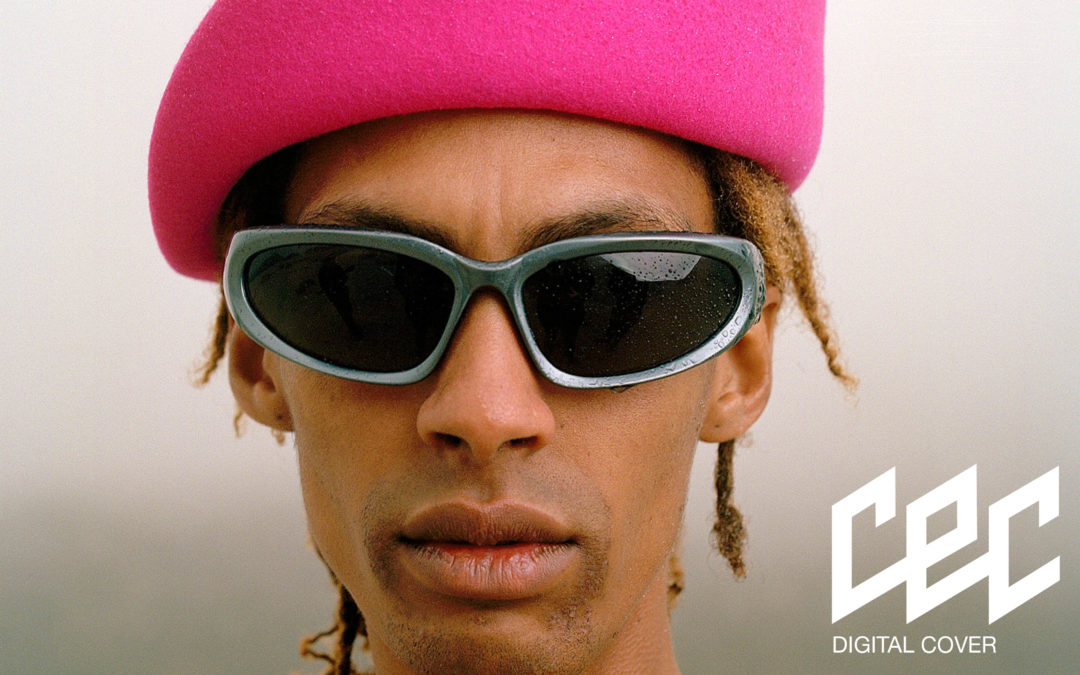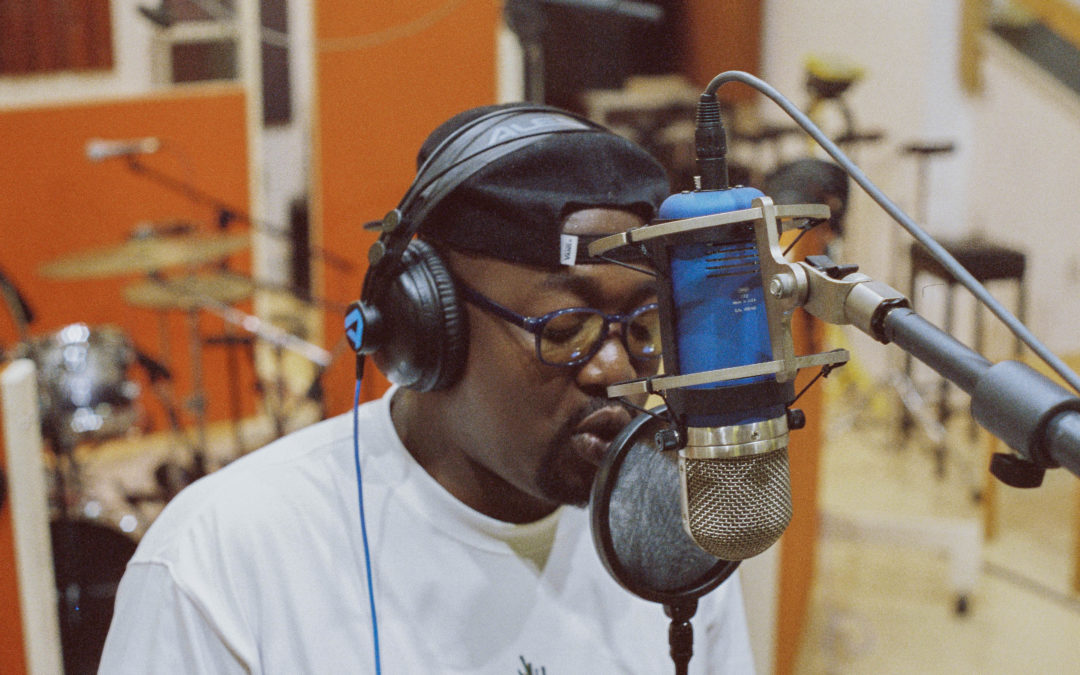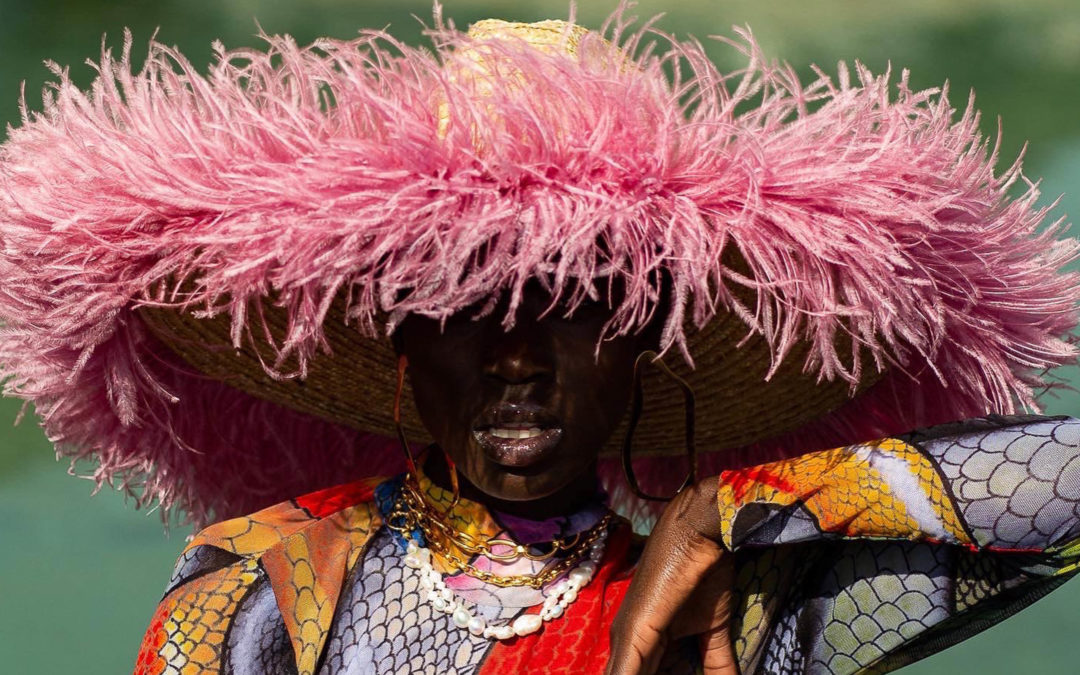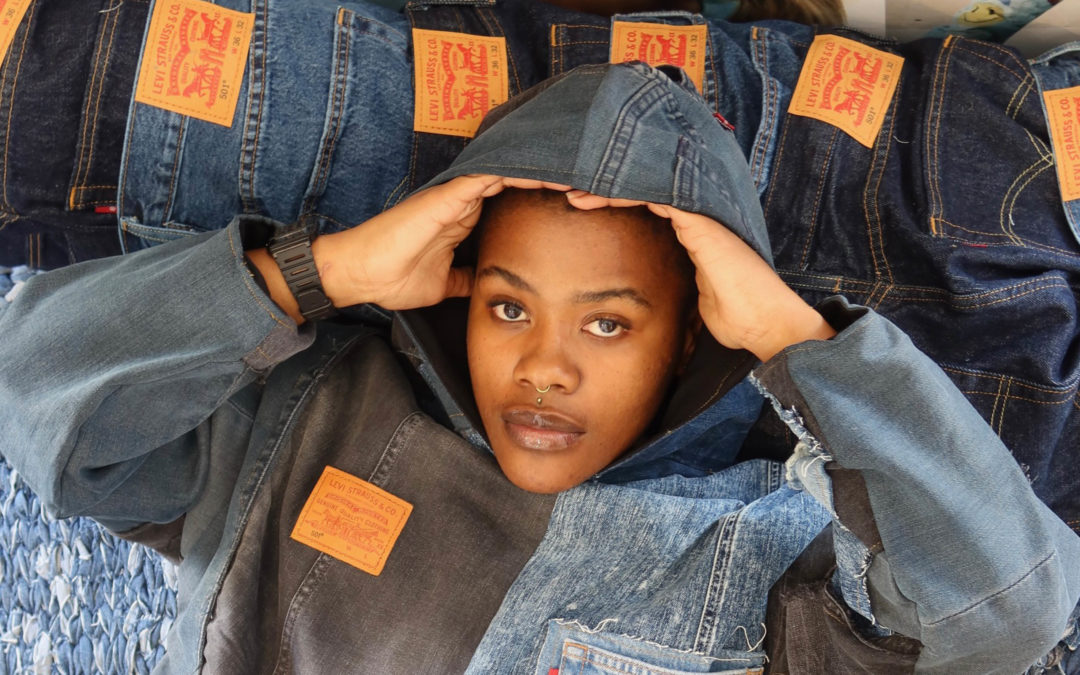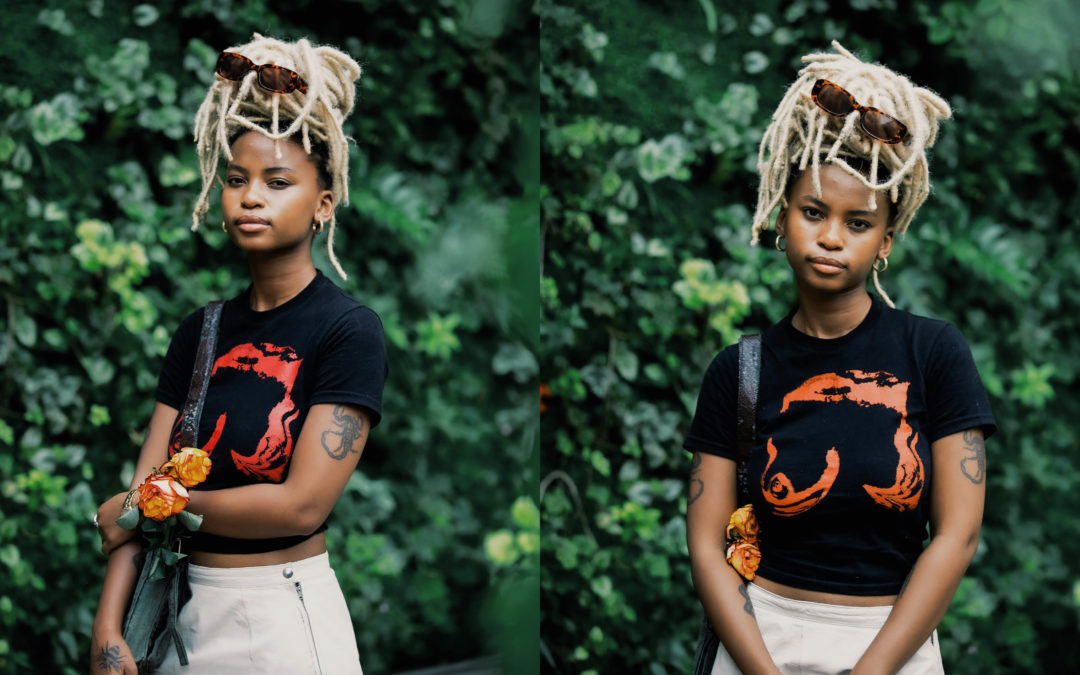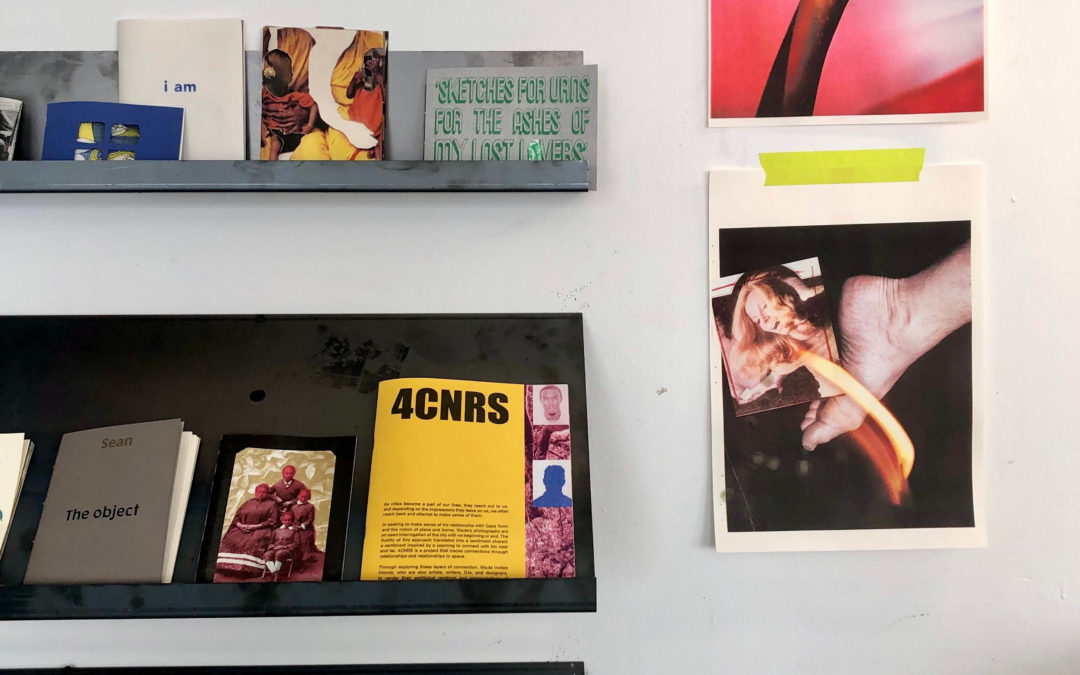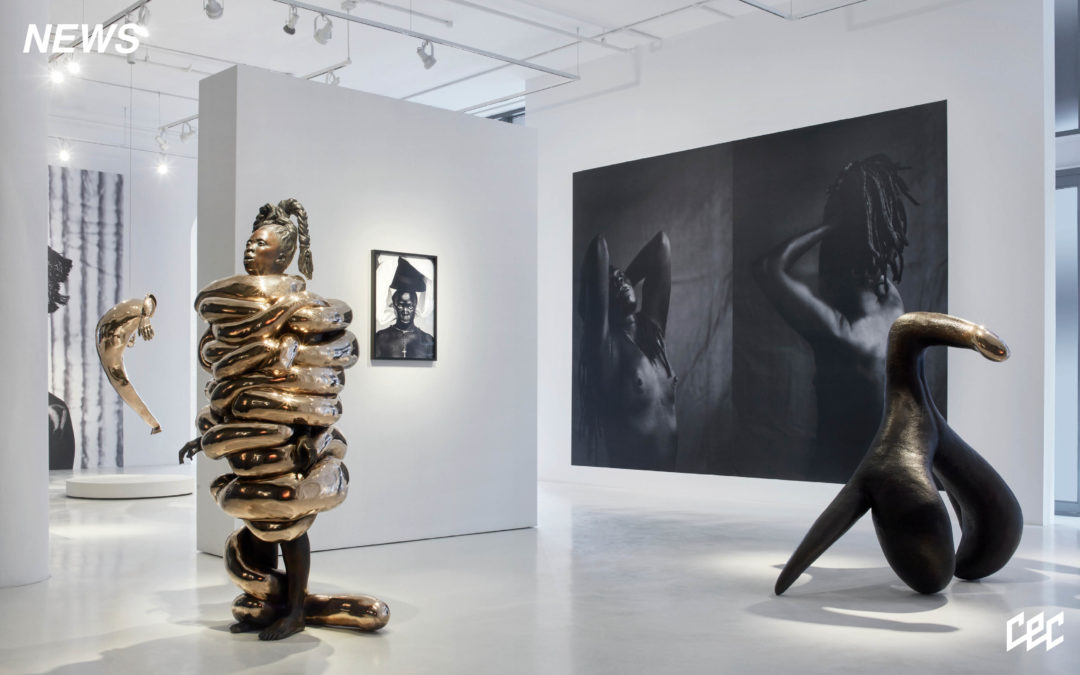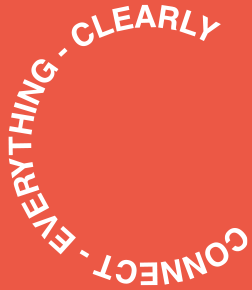Porky Hefer’s work exists as a bridge between the natural world and us humans – our need for design, and incisive penchant for biomimicry. There is perhaps no more a truthful or practical, or regal and hilarious, reference than that offered to us by nature; even in our bricked homes and concrete city-scapes; we are always seeking out the seedling that’s erupting through the pavement cracks. Porky has built his entire reality around this; himself, an antenna for receiving codes and caveats from the natural world. I’m not sure if it’s intentional or that for Porky, it’s the only authentic way to create the way he does; that is, to reflect natural phenomena in startling designs such as his ever-evolving Weaver’s Nest chairs and pods, and to do so through mostly hand-made methods and using indigenous materials. It is this simplistic honesty in Porky’s work – to reference and mimic nature and to do so compassionately towards nature – that sets the designer apart in a very serious, contemporary design landscape. I feel, when looking at his work, the inner-child leaps out of me; that little kid who still dreams of living in a tree-house. This evocative ability, among Porky’s technical and creative brilliance, marks a genius.
On the back of a very busy art week, and his fourth solo exhibition at Southern Guild Gallery, we asked Porky a few questions.
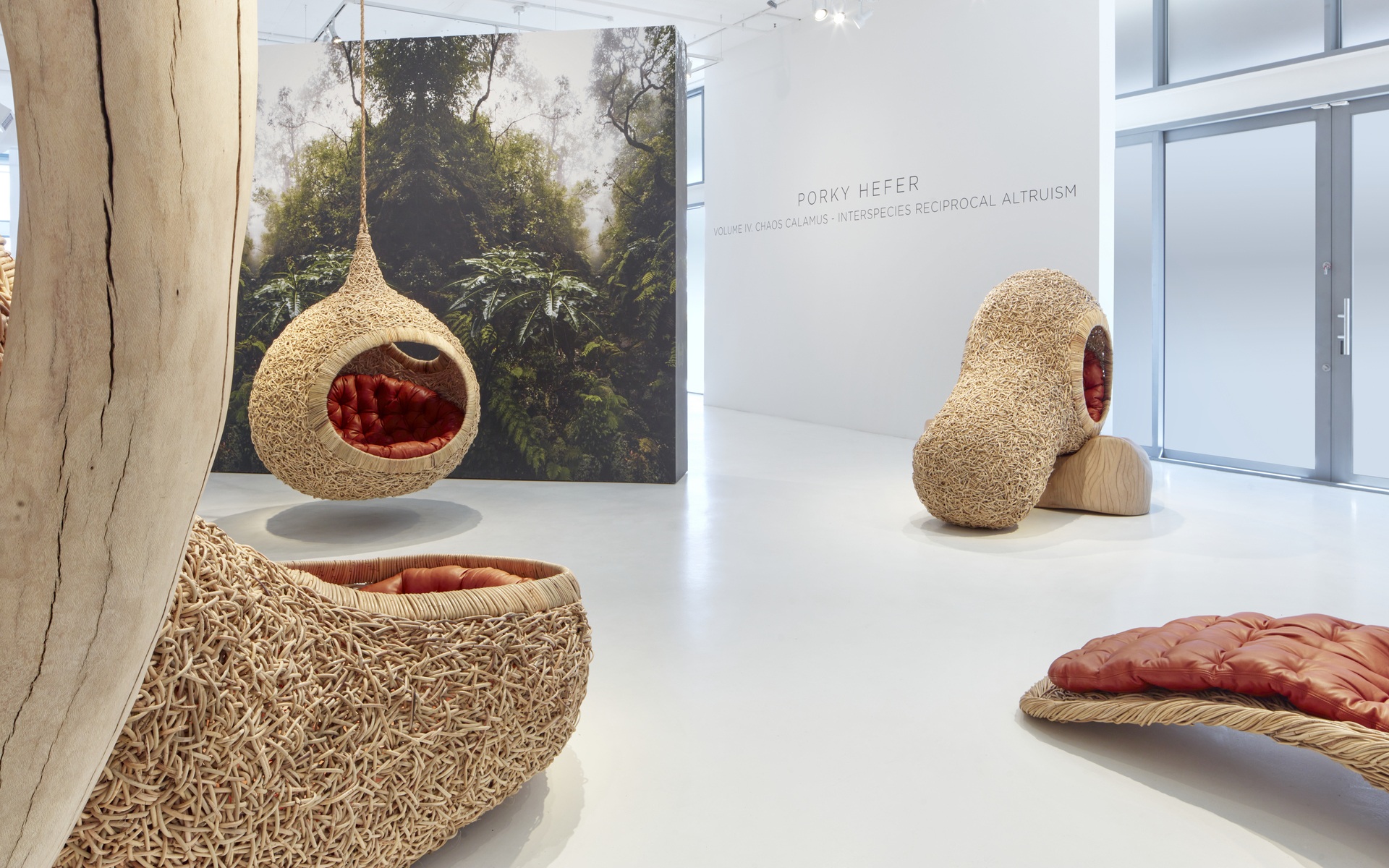
Porky Hefer, Chaos Calamus, 2023. Cr. Hayden Phipps, S Guild.
Your shift from being an acclaimed creative director to a designer is incredible – in reflection, how did your former career initiate the artist that you are today?
Advertising is/was an incredible industry. It’s very tough; crazy deadlines, late hours and very, very, competitive. I definitely met the most creative and talented people I have ever encountered. People like John Hunt and many others taught me everything and how to implement it, and it really affected the way that I think and approach problems. Mainly, it taught me how to think quickly and to vary my thinking process over and over, rather than approaching problems in the same way every time. I learnt how to create concepts with a past and a future, and that had a life, rather than just a moment or an object. I learnt about being strategic and understanding a market or demographic. I learnt how to sell. I learnt about craft and making things the best they can possibly be, rather than just simply making it. I learnt about being prepared and having your shit together. I learnt how to drink tequila until 4am and be at work at 6am. I learnt about working together with the best. I learnt about cooperation. I learnt to say no. I learnt how to delegate. I learnt how to disrupt. I learnt about competition and how to be competitive. I learnt to be not just good, but great.
Nature is your most critical reference – how do you consider the natural world throughout your process?
I stare at the small things that most people would walk past. I find nature fascinating and incredible – it constantly blows my mind. The small things’ habits, their societies, their beauty, their intelligence, their resilience, their strength, their love, their innocence. It is endless. Their inspiration is never-ending. In truth, I love animals more than humans.
The playful, tongue-in-cheek energy in your work sets you apart from the often-austere contemporary design language of today. Can you talk about having a sense of humour in your work?
I find humour the most important aspect of my work. I try to design my pieces so they will elicit a smile, a laugh, or a wow from the viewer or user. I always attempt to shift the state of mind or body into a happier state. Quite often, my pieces make people feel like a child again, and that’s a powerful thing. In fact, very often, children are my biggest fans: they love my work. More often than not, my work has a message I am trying to convey – I find it easier to win someone over if you start off on a positive note rather than trying to shock someone into opening up their mind.
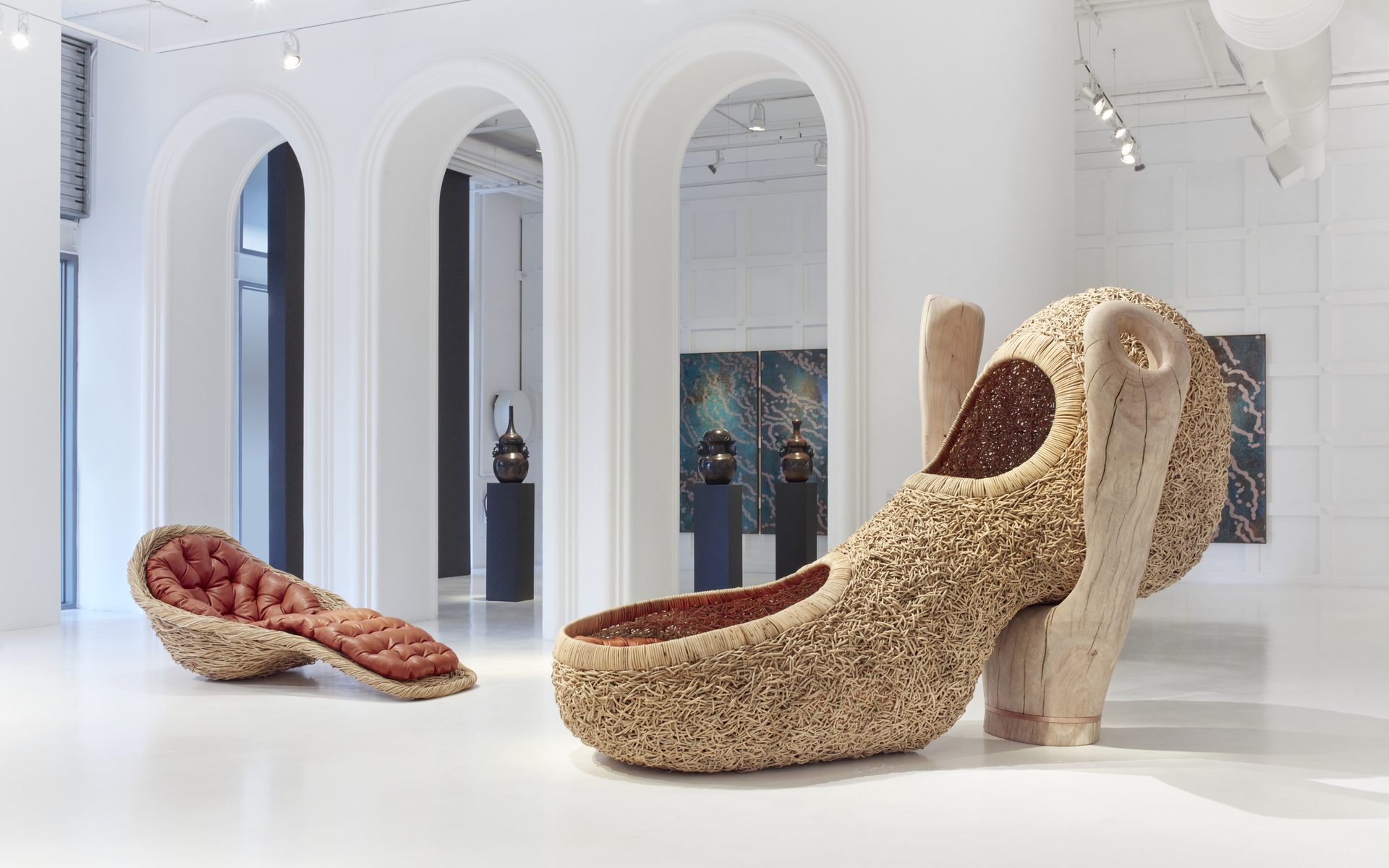
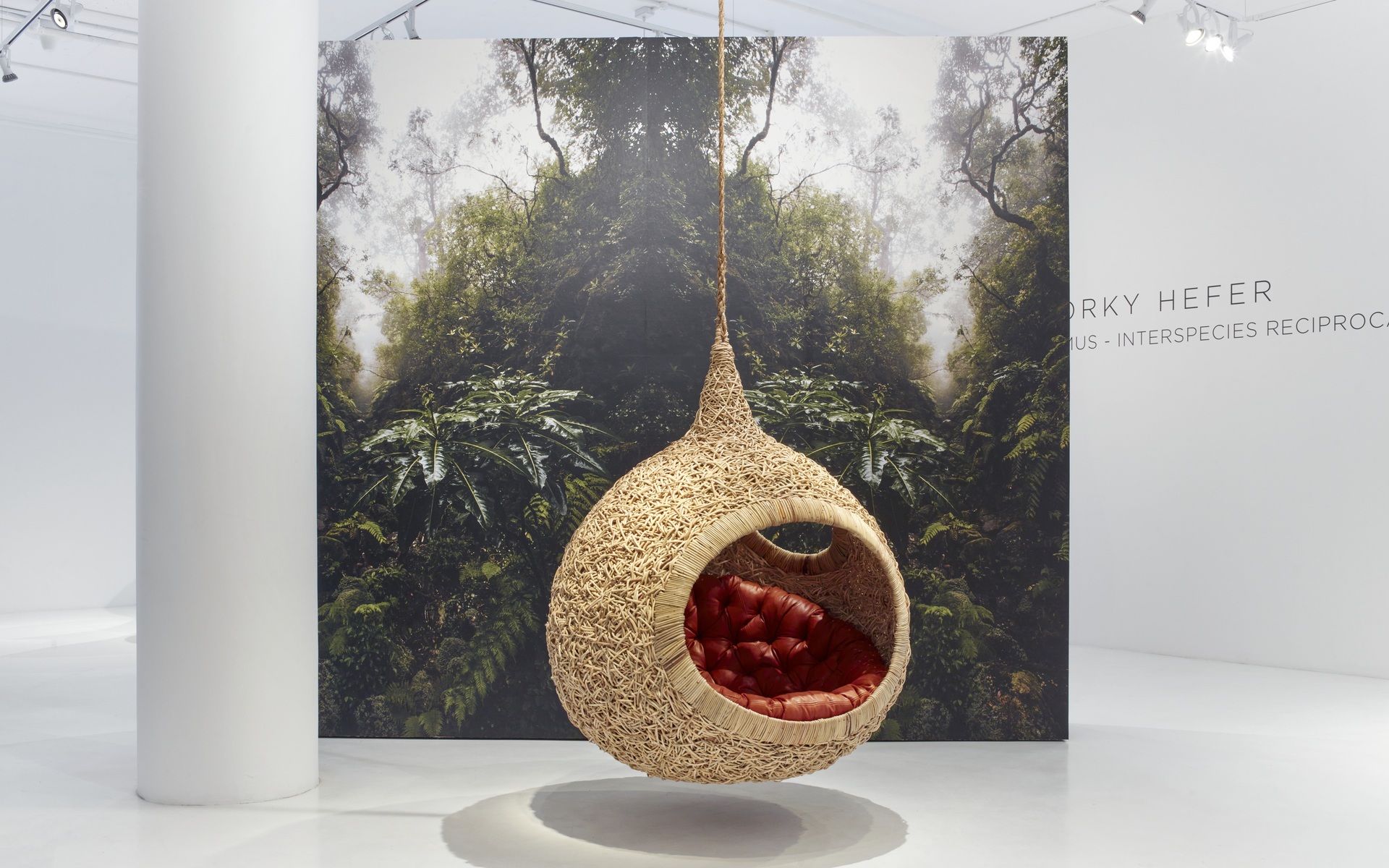
Porky Hefer, Chaos Calamus, 2023. Cr. Hayden Phipps, S Guild.
Your latest solo exhibition, Volume 4. Chaos Calamus – Interspecies Reciprocal Altruism, is a study on the magnificence and essentiality of the microbial world. Could you offer any thoughts on how the microscopic revealed itself to you, leading to this body of work?
I once read that early sci-fi writers, because of the fact that they had zero information about the universe, planets, or even the moon, had to rely on their own imaginations for source material for inventing their new worlds. Some would study nature, such as insect colonies and behaviour for their inspiration, and some went a bit deeper into the microscopic communities – and that’s what I decided to do: to delve into these microscopic worlds to see what I could find.
The first image of an amoeba was produced by August Johann Rösel von Rosenhof in 1755, who named his discovery “the little Proteus”, after Proteus, the shape-shifting sea-god of Greek mythology. The amoeba is the ultimate shape-shifter and can change its form at will simply by changing the state of its outer-walls and the fluids in its body. It extends in a desired direction by creating extensions called pseudopods, or false feet. These finger-like shapes balloon outwards, pulling the rear of its cell forward. They are adapting their shape constantly, evolving according to the immediate context or environment they find themselves in. This absolutely blew my mind. it’s the ultimate sci-fi creature.
The show starts with a round simplistic form which is typical of my first nests. But as we see the other pieces in the show, they start growing pseudopods and oozing off in different directions for different reasons. I wanted to evolve my shapes and forms, and oozing them out seemed the natural way to go. Cyclosis and Sol-Gel are first stages of the shape shift and these extensions provide space for you to slip your feet into.
In Pseudopodium, the extension has oozed down onto the floor, creating a seating area to accommodate another occupant. Binary Fission is the point when a cell divides into two – this piece is the moment just before splitting, creating two ends where people can sit facing each other, feet touching.
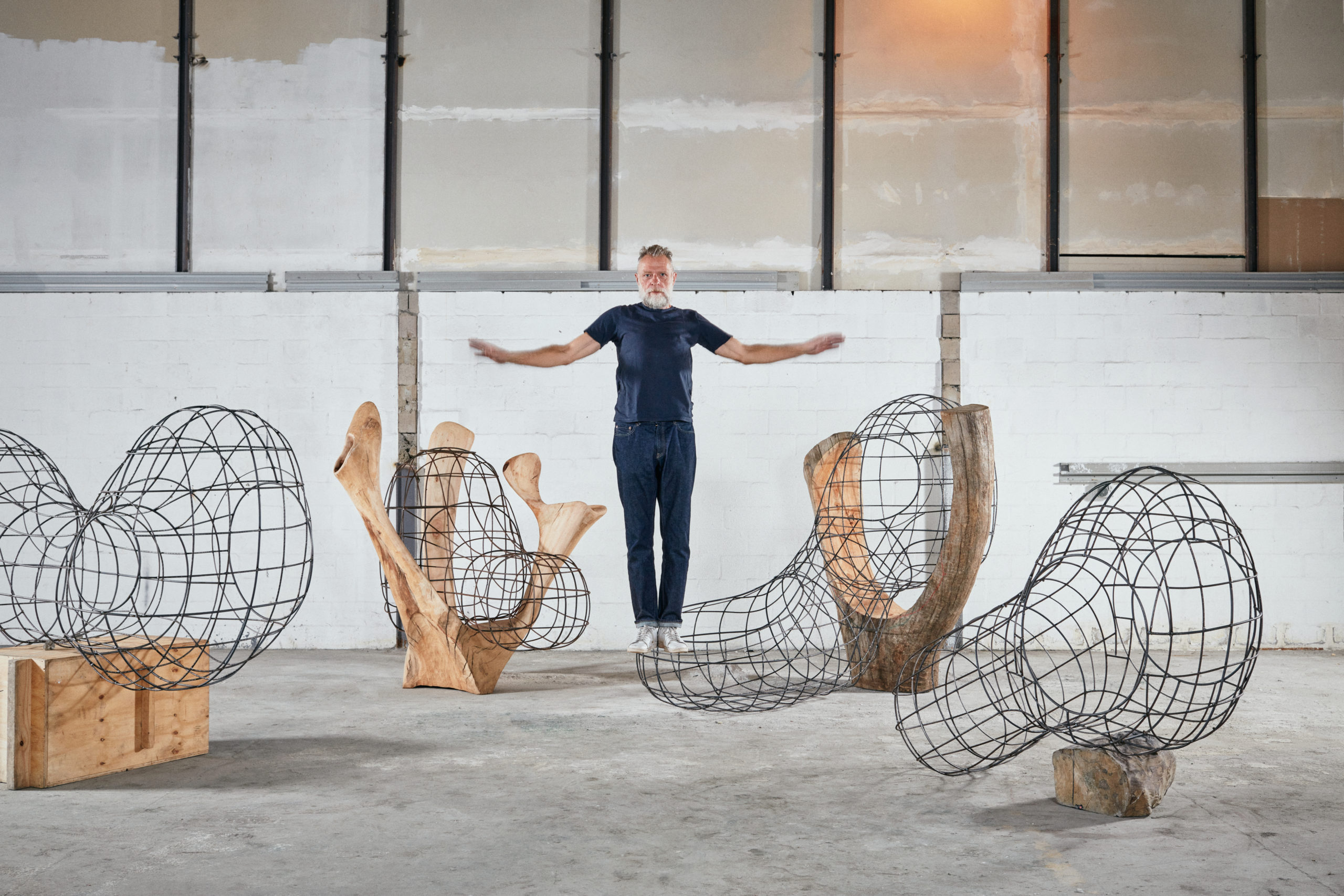
Porky Hefer, Portait, 2022. Cr. Hayden Phipps, SGuild.
Volume 4. Chaos Calamus – Interspecies Reciprocal Altruism is on at Southern Guild until 1 April 2023.
Image credit: courtesy of Hayden Phipps/Southern Guild
Written by: Holly Beaton


